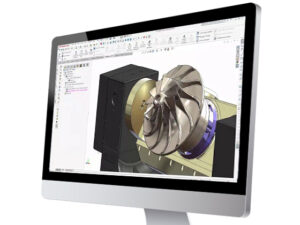Are you designing or manufacturing hydrogen tanks or other forms of composite tanks built by layering filaments? If so, WoundSim is an application you should consider. The WoundSim plugin application simplifies the process of designing and simulating composite pressure vessels. This article will outline the tool’s capabilities and what you’ll need to start designing.

The creators of the WoundSIM program characterize it as follows:
“WoundSim, the new generation software for designing, simulating, and optimizing filament winding [composite] pressure vessels (COPVs). Strong with more than 10 years’ experience on composite pressure vessels, WoundSim developers and mechanical engineers have addressed the many challenges and complexities which arise during the design and simulation of COPVs. The result is a tool providing a new user experience which is simple, fast and greatly simplifies the design process for COPVs. Fully compatible with Dassault Systèmes SIMULIA Abaqus Unified FEA.”
WoundSim is a tool that ensures your composite tanks will not fail under design pressures and conditions specified in the design. It takes input and generates a simulated model by using layering parameters.

Since WoundSim is a plug-in for Simulia Abaqus, you will need to own the software to utilize this tool. GSC is a partner of Abaqus and can help you advance your product performance. Learn more about its capabilities below:
Introduction to Abaqus
Once you have grasped those concepts, WoundSim adds additional capabilities inside of the Simulia Abaqus tool. More information on those specifics can be found here:
Interested in Using WoundSim?
GSC directly sells the Abaqus tool and will connect you with the creators of WoundSim to coordinate the plug-in feature. Start a conversation with us – we’ll assist and help you explore this opportunity.
Share
Meet the Author

